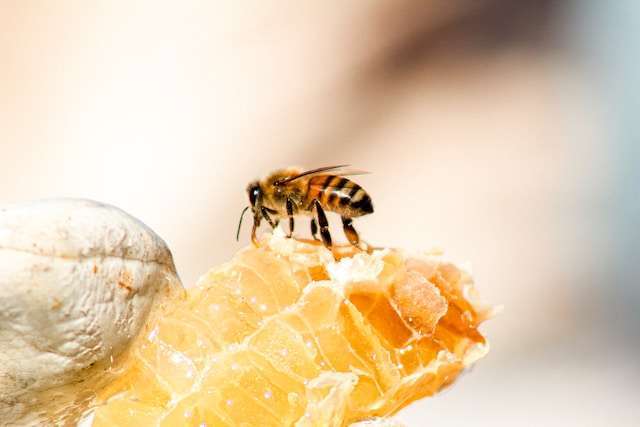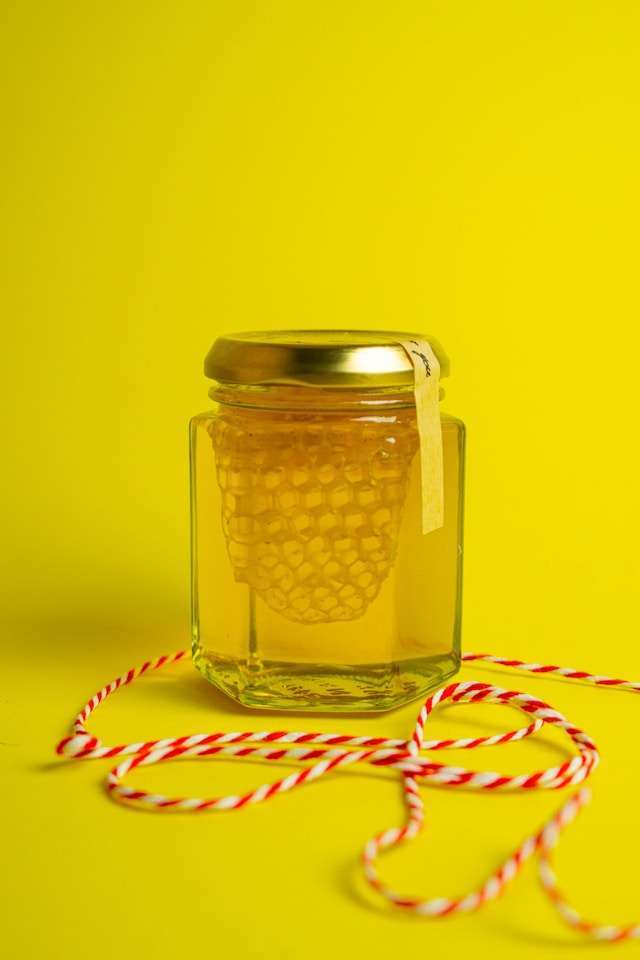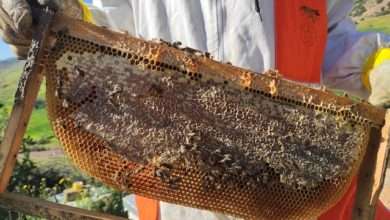Should You Sell Honey Sticks?

Honey sticks are becoming increasingly popular in the beekeeping industry. They are a great way to make money while also helping to promote beekeeping. But as a beekeeper, should you be selling honey sticks? This article will explore the pros and cons of selling honey sticks and give you a better understanding of the best way to approach this as a beekeeper.
Honey Sticks as a Potential Product to Sell
One fascinating aspect of beekeeping is the variety of valuable products that can be harvested from the hive. Among these products, honey stands out as a delicious and versatile substance coveted by many. Traditionally, honey has been enjoyed in its liquid form, poured directly from jars or honeycombs. However, in recent years, honey sticks have gained popularity as a convenient, portable, and mess-free way to enjoy the sweet nectar produced by bees.
Honey sticks, also known as honey stix or honey straws, are slender plastic tubes containing a single serving of honey. These individual servings typically range from 1 to 2 teaspoons, making them a perfect on-the-go sweetener for tea, coffee, or as a healthy snack. The stick form not only prevents spills but also eliminates the need for utensils, making honey sticks a favored option for those seeking a quick, natural energy boost during outdoor activities, travel, or work.
Moreover, honey sticks offer a range of flavors, enticing those with diverse palates. Besides traditional honey, different varieties infused with additional natural ingredients such as lemon, ginger, cinnamon, or even chili pepper are available, providing a delightful twist to an already delightful product. This versatility allows beekeepers to cater to a wide audience, encompassing both honey enthusiasts and individuals looking for unique taste experiences.
As a potential product to sell, honey sticks can be an attractive choice for beekeepers seeking to diversify their offerings. With proper packaging and marketing, honey sticks can be positioned as a healthy, all-natural alternative to conventional sweeteners. Additionally, their compact size and long shelf life make them suitable for retail in various establishments, including local farmers’ markets, specialty stores, and even online platforms.
Definition and Physical Description
Honey sticks, often called honey straws or honey tubes, are slender, cylindrical tubes filled with pure, delicious honey. They are typically around six inches long and come individually packaged, making them easy to carry, share, and enjoy at any time. The tubes are made from food-grade plastic or biodegradable materials, ensuring hygiene and convenience.
With their compact size and durability, honey sticks are a popular choice for those seeking a quick and mess-free way to enjoy the goodness of honey.
- How They Are Made
To produce honey sticks, beekeepers harvest honey from their hives and extract it using specialized equipment. The extracted honey undergoes filtration to remove any impurities, ensuring a smooth and flavorful end product.
Once the honey is pure and ready, it is carefully poured into the food-grade plastic or biodegradable tubes, often using machinery designed specifically for this purpose. The tubes are then sealed to maintain the honey’s freshness, and the sticks are ready for distribution. This efficient production process allows for large-scale honey stick manufacturing while preserving the honey’s quality and natural goodness.
- Different Flavors and Variations:
One of the most exciting aspects of honey sticks is the immense variety of flavors and variations available. While the base of all honey sticks remains pure honey, different flavors can be infused to create delightful experiences for your taste buds.
Some popular variations include:
- Citrus Burst: Infused with zesty citrus flavors such as lemon, orange, or lime, these honey sticks offer a refreshing and tangy twist to the natural sweetness of honey.
- Chocolate Lovers: Honey sticks infused with rich, smooth chocolate flavors provide an indulgent treat for those with a sweet tooth.
- Herbal Infusions: Some honey sticks incorporate the essence of various herbs such as lavender, rosemary, or mint, adding unique and aromatic dimensions to the honey’s taste.
- Exotic Fruits: From tropical pineapple to luscious mango, honey sticks infused with exotic fruit flavors offer a burst of paradise in every bite.
- Spice Infusions: For those craving a bit of heat and complexity, honey sticks infused with spices like cinnamon, ginger, or chili pepper create a perfect balance between sweetness and spice.
The popularity of honey sticks has led to numerous creative combinations of flavors, ensuring there is a honey stick to suit every preference and taste.
The Benefits of Selling Honey Sticks
- Additional Income Stream:
Selling honey sticks offers beekeepers a unique opportunity to generate an additional income stream. These conveniently packaged honey-filled straws have gained popularity among consumers due to their portability and convenience.
By harnessing this demand, you can tap into a market that appreciates the accessibility and natural sweetness of honey sticks. This additional revenue can help cover costs associated with running your apiaries, expanding your operations, or simply providing a boost to your income.
- Utilizing Excess Honey:

Beekeepers often find themselves with surplus honey, even after meeting their regular customers’ demands. Selling honey sticks presents an excellent solution for utilizing this excess honey effectively.
Rather than witnessing your hard work go to waste or sitting on jars of unpurchased honey, converting it into honey sticks allows for a higher rate of consumption and an extended shelf life. This not only reduces storage concerns but also ensures that your bees’ efforts are truly maximized.
- Expanding Customer Base:
One of the key advantages of selling honey sticks is the opportunity to expand your customer base. While traditional honey jars may appeal to a specific demographic, honey sticks cater to people seeking on-the-go snacking options, health-conscious consumers, parents looking for natural alternatives to sweeten their children’s meals, and even tourists as thoughtful souvenirs.
By diversifying your product range to include honey sticks, you can attract new customers who may not have considered purchasing honey in its more conventional form.
- Acting as a Marketing Tool for Other Honey Products:
Honey sticks serve as a clever marketing tool for your other honey products. Often, customers who try your honey sticks for the first time will be enticed to explore your other offerings.
Whether it’s raw honey, flavored honey, creamed honey, or beeswax-based products, honey sticks can act as an introduction, sparking the curiosity of customers and encouraging them to explore the wide array of honey options you have available. Thus, selling honey sticks can significantly enhance the visibility and sales of your entire honey product line.
Factors to Consider Before Selling Honey Sticks
Here are some of the key elements that should be taken into account before embarking on your honey stick selling journey.
- Availability of Surplus Honey:
The first crucial factor you should consider before selling honey sticks is the availability of surplus honey. Honey sticks are made from pure honey and require a significant amount of this golden nectar.
It is crucial to ensure you have a reliable and consistent supply of honey for production purposes. Whether you plan to harvest your own honey or establish a partnership with local beekeepers, it is essential to assess the quantity and quality of honey you can obtain.
- Costs and Time Required for Production:
Producing honey sticks necessitates investment in equipment, packaging materials, and labor. Before jumping into this venture, carefully evaluate the costs associated with honey stick production. Consider the expenses for purchasing or leasing machinery, acquiring packaging materials, and hiring staff, if required.
Additionally, assess the time required for production and packaging. Understanding these factors will help you determine the feasibility and profitability of your honey stick business.
- Legal Regulations and Licensing:
Selling honey sticks is subject to legal regulations and licensing requirements. These laws may vary depending on your geographical location, so it is essential to investigate and comply with the regulations applicable to your area.
Consider requirements such as food handling permits, labeling rules, health and safety standards, and any other legal obligations imposed on honey stick producers. Ignoring these legalities can result in penalties, fines, or even the cessation of your business operations.
- Packaging and Labeling Requirements:
Proper packaging and labeling are crucial aspects of selling honey sticks. Since honey sticks are considered a food product, it is vital to comply with packaging regulations to ensure product safety and appeal to consumers. Research the requirements for packaging materials, including hygiene standards and appropriate sealability.
Furthermore, familiarize yourself with labeling regulations that pertain to honey sticks, such as ingredient lists, nutritional information, and allergen warnings. Ensuring compliance with these requirements will help establish trust with consumers and ensure your honey sticks are well-received in the market.
How to Start Selling Honey Sticks
By following these steps, you can establish a strong foundation for your honey stick venture and maximize your chances of success.
- Setting Realistic Goals:
Before diving into the business, it is essential to set realistic goals for your honey stick enterprise. Consider factors such as your available resources, time commitment, and financial investment capacity. By determining your goals, you can outline a strategic plan and lay the groundwork for your business journey.
- Estimating Demand and Market Research:
Understanding the demand for honey sticks in your target market is essential to tailor your offerings. Carry out thorough market research to identify your potential customers, their preferences, and buying patterns.
Analyze your competition, identify trends, and gather insightful data to ensure that your products meet market demands and maintain a competitive edge.
- Pricing and Profit Margins:
Determining the right pricing strategy for your honey sticks is crucial for achieving profitability and sustaining your business in the long run. Consider various factors such as production costs, packaging expenses, overheads, and desired profit margins. By carefully assessing these elements, you can establish an appropriate pricing structure that not only covers your costs but also generates a reasonable profit.
- Creating an Appealing Packaging Design:
The packaging design of your honey sticks plays a crucial role in attracting customers and differentiating your brand. Invest time and effort in creating an appealing and eye-catching packaging that accurately represents the quality and uniqueness of your honey sticks. Consider using eco-friendly materials and incorporate your branding elements to create a distinctive identity.
Marketing and Distribution Strategies for Selling Honey Sticks
This section will guide you on how to develop a strong brand identity, utilize online platforms and social media, network with local businesses and farmers’ markets, and effectively use packaging and labeling as marketing tools.
Developing a Brand Identity:
Creating a brand identity is crucial for establishing a strong presence in the market. Start by defining your target audience and understanding their needs and preferences. Craft a unique brand name, logo, and tagline that reflect the essence of your honey sticks and appeal to your target customers. Consider the following key elements:
- Brand visuals: Design a visually appealing logo that incorporates elements related to honey and sticks. Use color psychology to convey the desired emotions and qualities associated with your brand.
- Brand voice: Develop a consistent tone and language for your brand. Choose words and phrases that resonate with your audience and align with the nature of your product (such as natural, organic, etc.). This will help create a strong brand personality.
Utilizing Online Platforms and Social Media:
In today’s digital era, utilizing online platforms and social media can significantly boost your honey stick sales. Here are some effective strategies to implement:
- Set up an e-commerce website: Create a user-friendly website where customers can browse and purchase your honey sticks. Showcase high-quality product images, provide detailed information, and offer convenient payment options.
- Social media presence: Establish a strong presence on popular social media platforms like Facebook, Instagram, and Twitter. Regularly post engaging content, such as product updates, honey-related facts, recipes, and user-generated content. Interact with your followers and respond to their queries and feedback promptly.
Networking with Local Businesses and Farmers’ Markets:
Collaborating with local businesses and participating in farmers’ markets can help you increase your reach and build strong connections with your target customers. Consider the following strategies:
- Establish partnerships: Approach local cafes, gourmet stores, health food shops, and gift shops to stock your honey sticks. Offer samples, provide product information, and highlight the unique selling points of your product.
- Farmers’ market participation: Apply to become a vendor at farmers’ markets in your area. Set up an attractive booth, engage with potential customers, and offer tasting samples. Use this opportunity to promote the health benefits and quality of your honey sticks.
Packaging and Labeling as Marketing Tools:
Packaging and labeling play a crucial role in attracting customers and conveying important information about your honey sticks. Follow these guidelines:
- Eye-catching packaging: Design attractive and eco-friendly packaging that stands out on the shelves. Consider using honey-inspired colors, natural imagery, and clear labeling.
- Informative labeling: Include essential details on the label, such as the ingredients, nutritional information, honey source, and any certifications (e.g., organic, non-GMO, etc.). Highlight any unique selling points, such as the flavor varieties or health benefits.
Tips for Successful Honey Stick Sales
Here are four essential tips that will help you boost your honey stick business effectively.
- Offering Tasting Samples
One of the most effective ways to entice customers and increase sales is by offering tasting samples of your honey sticks. Setting up a dedicated sampling station or incorporating samples into your display will allow potential customers to experience the delightful flavors of your product. By allowing customers to taste different varieties, you can pique their interest and encourage them to make a purchase.
- Providing Educational Materials about Bees and Honey
Many customers are not only looking for a delicious treat but are also interested in the story behind the product. Provide educational materials, such as brochures or posters, explaining the importance of bees in the ecosystem, the process of honey production, and the health benefits of consuming honey sticks. By educating customers about bees and honey, you will not only increase their understanding but also foster a deeper connection with your brand.
- Offering Discounts or Promotions to Attract New Customers
Introducing discounts or promotions is an effective strategy to attract new customers and incentivize repeat sales. Consider offering special deals, such as “buy one, get one free” or “10% off on your first purchase.” Promotions can be advertised through social media, your website, or even in-store signage.
By creating a sense of urgency and providing value for money, you are more likely to draw in new customers and encourage them to become loyal patrons.
- Building Relationships with Customers for Repeat Business
It is essential to build strong relationships with your customers to ensure repeat business. Train your staff to provide exceptional customer service, go above and beyond to meet customer needs, and engage in friendly conversations. Personalize the customer experience by remembering their preferences and offering product recommendations based on their taste.
Consider implementing a loyalty program to reward frequent customers, such as offering discounts, freebies, or exclusive access to new honey flavors. By investing in your customers and showing appreciation for their support, you can establish a loyal customer base that will keep coming back for more honey sticks.
Challenges and Potential Risks
Here, we will explore the issues that honey stick sellers may encounter and provide strategies to mitigate these risks.
Competition from Other Honey Products:
Competition is a ubiquitous challenge in the business landscape, and the honey stick market is no exception. With various other honey-based products available, sellers must stand out and differentiate their honey sticks from the competition. Here are a few recommended approaches:
- Unique Flavors: Offer a diverse range of flavors, including traditional and exotic options, to attract customers seeking variety and novelty.
- Organic and Local Sourcing: Emphasize the use of organic and locally sourced honey, as environmentally conscious consumers are increasingly inclined to support sustainable and ethical products.
- Customizable Packaging: Consider offering personalized packaging options, allowing customers to add their own logos or messages. This can create a memorable and distinctive brand identity.
Seasonal Variations in Honey Production:
Honey production is influenced by seasonal changes, which can impact availability and pricing. To address this challenge, sellers can employ the following strategies:
- Collaborate with Apiaries: Establish partnerships with local beekeepers or honey producers who can supply honey year-round. This ensures a consistent supply and minimizes the effects of seasonal variations.
- Diversify Product Range: Expand your product offerings beyond honey sticks. Consider incorporating additional honey products, such as raw honey jars or honey-infused snacks, to sustain sales during seasons of low honey production.
- Educate Consumers: Raise awareness among customers about the natural fluctuations in honey availability. Encourage them to stock up during peak seasons or consider alternative products during leaner periods.
Ensuring High Quality and Consistency:
Maintaining consistent quality is crucial to building trust and retaining customers. Here are some steps to ensure the high quality and consistency of your honey sticks:
- Quality Control: Implement rigorous quality control processes, testing each batch of honey for purity and adhering to strict hygiene standards during production.
- Supplier Selection: Choose reliable and reputable honey suppliers who prioritize quality and adhere to industry standards.
- Customer Feedback: Encourage customer feedback and reviews. Address any issues promptly and continuously improve your product based on customer suggestions.

Dealing with Regulatory Changes or Restrictions:
As with any food product, honey sticks can be subject to regulatory changes or restrictions imposed by health and safety authorities. To navigate these potential risks, consider the following strategies:
- Stay Informed: Stay abreast of regulatory updates in your target market. Regularly check government websites or consult industry associations for relevant information.
- Compliance and Certifications: Adhere to all necessary food safety regulations and obtain relevant certifications, such as FDA approvals or organic certifications. This demonstrates your commitment to quality and ensures compliance with legal requirements.
- Adaptability and Flexibility: In the face of regulatory changes, be prepared to make necessary adjustments to your manufacturing processes, packaging, or ingredient sourcing. Stay agile and proactive in maintaining compliance.
Conclusion
Selling honey sticks can be a lucrative and rewarding endeavor for beekeepers, providing numerous benefits such as convenience, unique packaging opportunities, and access to new markets.
By carefully considering the necessary regulations and production costs, beekeepers can successfully enter the honey stick market.
Furthermore, this chapter encourages beekeepers to try selling honey sticks as a means of diversifying their product range and expanding their customer base.
However, amidst the excitement of entrepreneurship, it is crucial to maintain the passion for beekeeping that brought us here in the first place.
Let your love for bees and dedication to their well-being guide your journey as a beekeeper, ensuring a sustainable and fulfilling future in this remarkable field.
Frequently Asked Questions about Honey Sticks for Beekeepers:
What are honey sticks and what do people do with them?
- Honey sticks, also known as honey straws, are plastic tubes filled with liquid honey. People enjoy honey sticks for their convenience and portability. They can be bitten open or punctured with a needle to release the delicious honey, which can then be enjoyed as a sweet treat or squeezed into beverages, such as tea or coffee. Some even use honey sticks as a natural sweetener for baking and cooking.
What is the point of honey straws?
- The primary purpose of honey straws is to provide a convenient and mess-free way to enjoy the natural sweetness of honey. They are especially favored by people on the go, as honey sticks can be easily carried in purses, pockets, backpacks, or lunchboxes. Honey straws are also popular among children, as they provide a fun way to have a sweet snack without the risk of spills or sticky messes.
How much honey is in a honey stick?
- The amount of honey contained in a honey stick typically ranges from 1 to 2 teaspoons (5 grams), depending on the brand and size of the straw. This allows for a satisfying amount of honey to be consumed in one sitting, making it a perfect single-serving portion for most people’s needs.
Are honey sticks a good product for beekeepers to sell?
- Yes, honey sticks can be an excellent product for beekeepers to sell. They offer an additional revenue stream by utilizing the honey produced by their bees, often in a more appealing and accessible format for consumers.
- Honey straws make great items to sell at local farmers’ markets, food festivals, or as part of gift baskets. Additionally, they can attract customers who may not typically purchase honey in traditional jars or bear-shaped containers.
Are honey sticks suitable for people with dietary restrictions?
- Honey sticks are generally suitable for individuals with dietary restrictions, as long as they can consume honey. However, those who have a known allergic reaction or sensitivity to bee products should avoid honey sticks.
- Additionally, people with diabetes should be mindful of the sugar content in honey and consume it in moderation while considering their dietary requirements.
Can honey sticks be used as wedding or party favors?
- Absolutely! Honey sticks make charming and unique wedding or party favors. They can be personalized with custom labels or tags to match the event’s theme or the couple’s names. Guests will appreciate receiving a sweet treat that reflects the couple’s commitment to sustainable and natural products.




